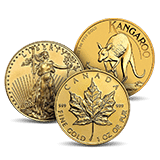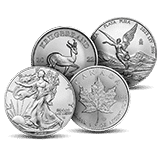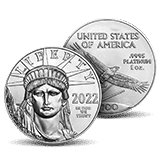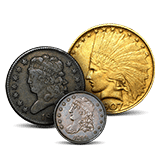
The Gold $100 Union coin was never minted and canceled before pattern coins could be produced. It was envisioned as a symbol of the country’s economic strength and a tool for facilitating large transactions during the gold-rich era of 19th century California. Although the coin was never produced, sketches and patterns created by George T. Morgan have cemented its legacy in numismatic lore.
Historical Background
The idea of the $100 Gold Union coin originated during a period of economic transition in the mid-19th century. In 1854, as California experienced a gold rush, locals and people in business petitioned U.S. Treasury Secretary James Guthrie for large denomination coins. With banknotes scarce and gold abundant in the state, the petition proposed $50 and $100 gold coins—dubbed the Half Union and Union, respectively—to facilitate trade and commerce.
Guthrie’s proposal gained traction in Congress and passed the Senate on June 16, 1854, but died in the House. The Mint concluded that the half-union would contain almost three troy ounces of gold. The sheer weight and value of the coins were deemed impractical for everyday transactions, and the idea was shelved. While the $50 Half-Union remained a potential design for decades, the $100 Union coin faded into obscurity.
Design and Features
Though the $100 Union was never minted, sketches created by George T. Morgan provide insight into what the coin might have looked like.
Obverse
Lady Liberty, a classical figure symbolizing freedom and prosperity, holding a caduceus and a branch, symbolizing peace. She is sitting on a crate of goods and a bunch of wheat rests alongside the crate. In the background, a boat on a body of water lies between Liberty and a mountain in the distance. Above is the word “LIBERTY” with the date below the design. The date and “LIBERTY” are punctuated with 13 stars encircling the design.
Reverse
A majestic eagle with outstretched wings, symbolizing strength and freedom. In its talons are a shield and three arrows. Above the eagle is a banner stating IN GOD WE TRUST, and the words “UNITED STATES OF AMERICA – ONE HUNDRED DOLLARS” surround the design.
Development and Cancellation
Although sketches for the Union coin date to 1876, the design did not progress beyond a conceptual stage. The high denomination and impractical gold content contributed to its demise. Additionally, the economic depression of 1873–1879 reduced the demand for such high denomination coins, as unemployment and economic hardship made larger denominations less necessary.
Modern Interpretations
While the original $100 Gold Union was never minted, its story has inspired modern fantasy pieces produced by private mints. These coins mimic Morgan’s original designs and are struck in gold or silver for collectors. Notably, these replicas are not legal tender, as only the U.S. Mint can produce currency.
Fantasy Souvenirs
The Smithsonian Institution, which houses Morgan’s original sketches, collaborated with private mints to create fantasy souvenirs. These pieces aim to honor the artistry and history of the $100 Union while providing collectors with a tangible representation of the coin that never was.
Commemorative Coins
The U.S. Mint has since issued $100 denomination coins, such as the American Platinum Eagle and the American Liberty High Relief Gold Coin. While these coins bear no direct connection to the Union proposal, they continue the tradition of high-denomination U.S. coinage.
George T. Morgan and His Designs
George T. Morgan was born in 1845 in Birmingham, England and his career left an indelible mark on American coinage. After studying at the Birmingham School of Art and working at the British Royal Mint, Morgan joined the U.S. Mint in 1876. He contributed numerous iconic designs to the American currency landscape, including the famed Morgan silver dollar.
Morgan’s sketch for the $100 Union is part of a larger collection housed at the Smithsonian Institution’s National Museum of American History. These sketches were rediscovered in 2006 by numismatist Jeff Garrett, who brought new attention to Morgan’s vision for the coin.
Collectability and Value
The $100 Gold Union fantasy coins remain a prized concept among numismatists. Pieces inspired by Morgan’s designs are highly sought after, with collectors valuing them for their historical significance and artistic beauty. These replicas are often struck in proof finishes, making them standout additions to any collection.
Modern commemorative coins with a $100 denomination, such as the American Liberty, also hold significant value for their .9999 gold purity.
Although it was never minted, the Gold $100 Union represents the ambition and creativity of a nation striving to modernize its currency during a time of economic transformation. Its legacy endures as a reminder of what could have been—a grand statement of America’s economic strength encapsulated in gold.




